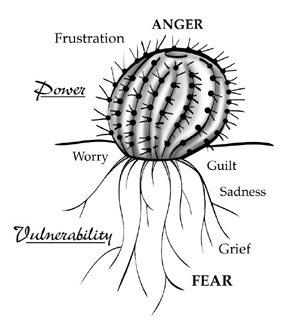When you think back to the most meaningful moments that you experienced during last year’s holidays, what comes to mind? Were you giving or receiving? Maybe you shared a rich conversation with someone, and you felt understood and loved afterward. Or, maybe you received a warm feeling in your heart after giving (or donating) your time and attention to others. Or, perhaps a gift that you received made you feel appreciated.
Or possibly, when you think back to last year’s holidays…you feel anxiety in the pit of your stomach. You flash back to the traffic jams, shopping madness, credit card bills, as well as overeating, overdrinking, and the subsequent family drama that commonly occurs during holiday gatherings (like when your competitive sibling sent some sarcastic “zingers” toward you—that subtly sliced through the cranberry sauce—during the holiday dinner).
Let’s face it, in our culture holidays often become highly charged due to demanding and unrealistic expectations. As a result, if we are not tuned in to (or in touch with) our emotions…holiday interactions can turn prickly.
For this reason, in my book Stress Reduction Journal: Meditate and Journal Your Way to Better Health, the following Barrel Cactus diagram illustrates how many of us express (or repress) the emotions that challenge us.
In my illustration you’ll notice that there are emotions “above ground” as well as emotions that are buried “below ground.” The so-called powerful emotions that create the prickly needles on the outer skin of the cactus include anger and frustration. The so-called vulnerable emotions are buried under the ground’s surface and include fear, worry, guilt, sadness (and its counterpart: grief).
This diagram illustrates the complexity of our emotional landscapes. An important point that I often share with clients regarding emotional expression is that…
~ ANGER IS A SECONDARY EMOTION ~
Yep, the prickly parts of anger express above ground…but the vulnerable roots of anger FIRST originate below ground. To clarify how anger is a secondary emotion I offer the following scenario.
For those of us who drive cars, we’ve probably experienced being on a freeway when a car driving erratically pulls in front of us—abruptly moving into our lane. If we’re lucky, we slam on our car’s brakes to avoid hitting the son of a gun and quietly gasp under our breath as we do so. Then, as soon as we see that we are still “in one piece”—we feel steam pouring out of our ears, and we may wave an angry fist (or a middle phalange) out the window. In this instance, see how our vulnerability—or FEAR—was experienced first and expressed during the quiet gasp? Secondly, our anger ignited and was negatively expressed or “acted out.”
So, with a plethora of external holiday pressures now upon us, why don’t we consider managing our holiday stress from the inside out? We can begin by being mindful of our emotions and keeping a watchful eye…turned toward our own personal Barrel Cactus. Here are some examples of destructive expressions of emotions, followed by some examples of more constructive options.
——————————————————————————————–
Destructive Expressions of Emotions Include:
Emoting Indirectly: Sarcasm, gossip, nagging, or complaining
Turning Unaddressed Emotions Inward: Depression, guilt, self-criticism, or psychosomatic illness
Acting-out Emotions: Faultfinding, blaming, screaming, throwing things, stealing, excessive drinking, drug abuse, self mutilation (picking or cutting), over-eating, under-eating, extramarital affairs, reckless driving, seeking revenge, or violence toward ourselves or toward others.
Constructive Expressions of Emotions Include:
Communicating Assertively: We respectfully communicate to others using “I-statements” to own our feelings—rather than using blaming “You-statements.” In many circumstances, when we express to others how we are feeling “below the prickly cactus” (sharing our vulnerable feelings) we have a higher probability of being heard.
We attentively listen to others when they share. We imagine stepping into their shoes. To clarify that we understand what is being said, we mirror back what we heard. We seek win-win solutions to challenges, rather than creating “power struggles” that result in win-lose dynamics. In our personal relationships, we sincerely apologize when we realize we are wrong.
Setting Healthy Boundaries: To avoid “acting out” our emotions, we mindfully set healthy limits with our behaviors (shopping, eating, drinking, and so on), as well as protecting ourselves from the unhealthy or destructive behaviors of others. For example, we don’t drive under the influence, and we won’t be driven by anyone under the influence (calling a cab is always a smarter option).
Seeking Outer Positive Resources: When needed, speaking with a therapist or a seasoned minister about our feelings can help us clarify what is going on in our emotional landscapes. If our anger is a challenge, then we may choose to sign up for a local Anger Management Class. In a crisis, when immediate help is needed, we call 911 or our local police. Other resources include the 24-Hour Contra Costa Crisis Hotline: 1-800-833-2900 and the National Suicide Hotline: 1-800-SUICIDE (784-2433).
Taking Time to “Go Inward” and Tuning into Our Emotions: Meditation, prayer, and journaling are a few methods for turning inward. When we identify feeling frustrated or angry, we quickly ask ourselves: “What vulnerable feelings are buried below my prickliness?” Then after identifying other feelings (like fear, worry, guilt, sadness, or grief) we ask: “What can I do right now—to take good care of myself?” We may consider taking a nice deep breath, along with a momentary “time out,” to calm and collect ourselves.
Exercising: Dancing, running, walking, and playing sports are healthy ways to release stressful emotions. And, when exercising reaches certain levels, it triggers a pleasurable release of endorphins. (Always check with your doctor before changing your exercise routine).
So, there you have it—a number of destructive and constructive examples of emotional expression. It’s up to you which list you choose to express from. In closing, I’d like to wish you and your loved ones a safe and a happy holiday! And, remember to manage holiday stress from the inside out by decking the halls with plenty of the following: loving hugs, laughter, music, heartfelt compliments, appreciation, time to recharge, playfulness, creativity, walks in nature, restful sleep, spiritual reflection, and a humble…attitude of gratitude.
Trina Swerdlow, BFA, CCHT, is a certified clinical hypnotherapist, an artist, and the author of the 2-CD Set, Weight Loss: Powerful & Easy-to-Use Tools for Releasing Excess Weight. She is also the author of Stress Reduction Journal: Meditate and Journal Your Way to Better Health. Her CDs and her book are available from John Muir Women’s Health Center online store: www.womenshealthcenterstore.com/books1.html.
Trina has a private practice in downtown Danville. You can reach her at: (925) 285.5759, or info@TrinaSwerdlow.com. To receive her free newsletter, “Trina’s Transformational Tips for Mindful Living,” sign-up at her site: www.TrinaSwerdlow.com (Certified Clinical Hypnotherapy services in California can be alternative or complementary to licensed healing arts, such as psychotherapy.)
Photo by Susan Wood, www.SusanWoodPhotography.com


Leave a Reply